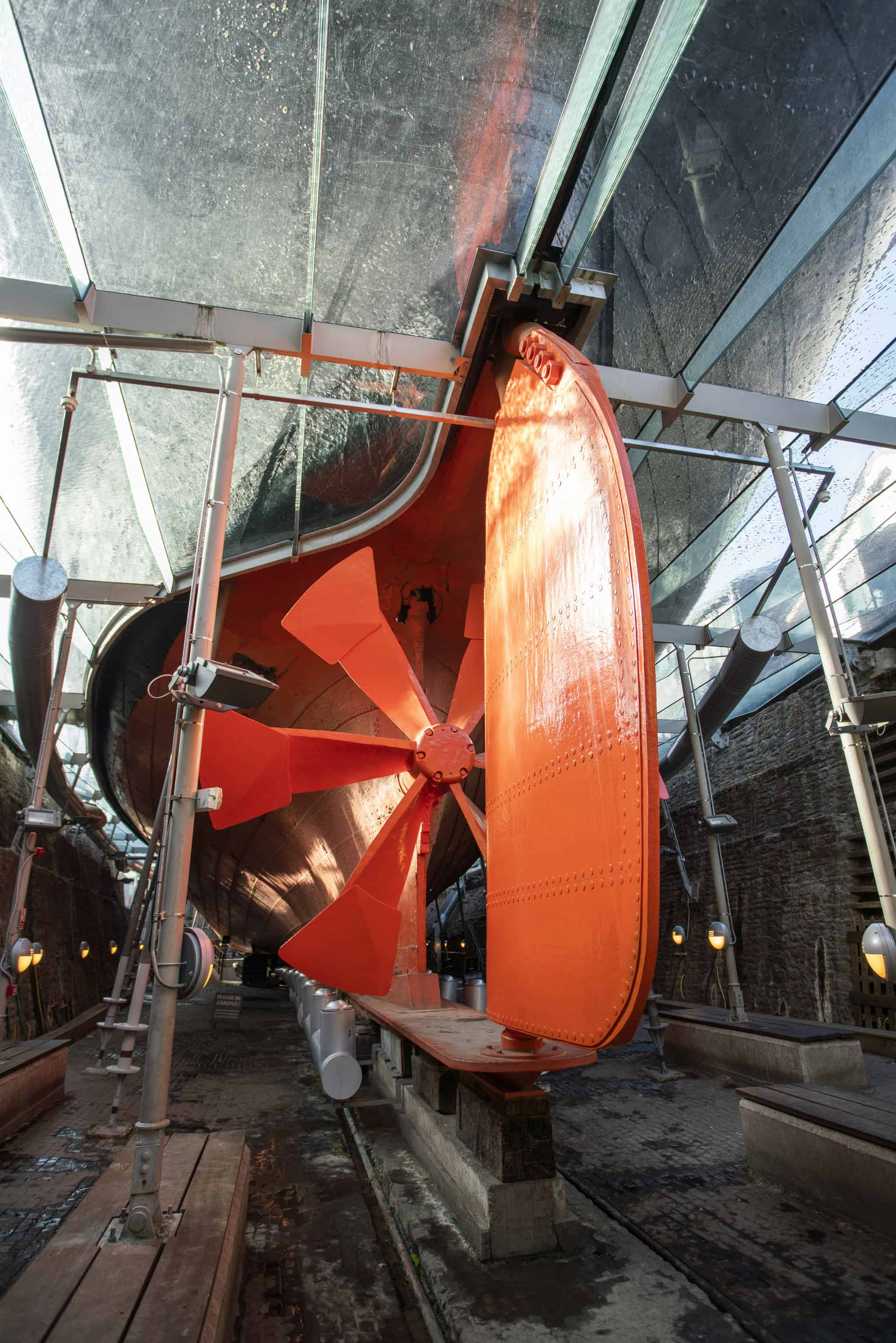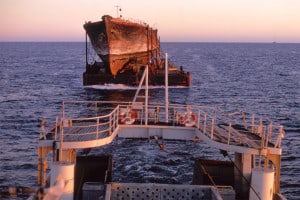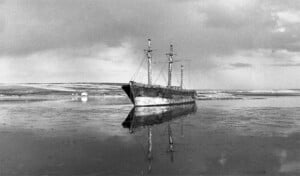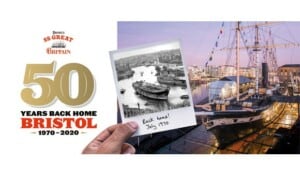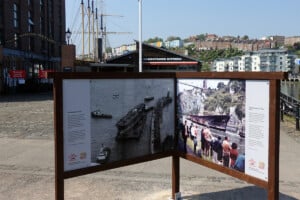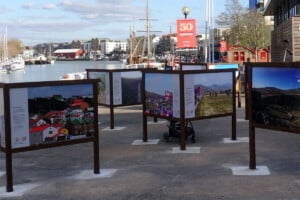A diver’s-eye-view of the SS Great Britain rescue, 50 years on
Two of the divers, Lyle Craigie-Halkett and Stu Whatley, recently shared their memories of the SS Great Britain, thinking back to 1970…
“This is what we did, but we’d never done it like this before,” said Lyle, an experienced diver specialising in salvaging vessels.
It was an operation that was going to take tremendous skill and determination combined with a good helping of luck. It was also a project prompting many ‘firsts’… such a large vessel had never been salvaged this way before, and the tow would be the longest ever undertaken.
It was a project that all those involved said simply “just had to succeed.”
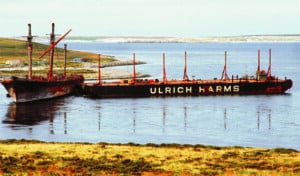
Tony Morrison / South American Pictures
“We always said she wanted to come home,” Lyle remarked. “So many things went well where they could easily have gone the other way and been a total disaster.”
The plan sounded straight forward enough – patch up the holes, pump out the water, let the ship float and guide her, very carefully, onto a submersible pontoon which was sunk beneath her. Once she was on the pontoon it would be possible to tow the SS Great Britain back home to Bristol. But this was anything but straightforward.
Lyle, a diver rigger originally from the Falkland Islands, was part of a salvage crew working for Southampton company Risdon Beazley Marine. Led by Bill O’Neil, the senior salvage officer, and working with former Royal Navy clearance diver Stu Whatley, Bob Light and Don O’Hara, they formed part of the British team that would be working closely with a German team from Ulrich Harms of Hamburg.
“I got involved through Lyle,” said Stu. “We were removing a recently sunk cargo ship in the English Channel, and I had never heard of the SS Great Britain or the Falkland Islands, but Lyle said ‘it’s going to be a great job’, so I just said ‘righto, I’ll go’”.
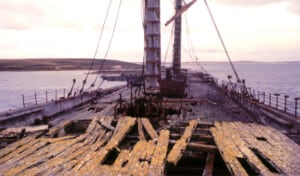
Marion Morrison/ South American Pictures
After a long journey to the Falklands the team would finally see the challenge ahead of them.
“It was many years since I’d last seen the Great Britain and my initial reaction was of extreme dismay, and I wasn’t alone with my feelings,” Lyle said.
“The ship was quite dangerous,” Stu added. “The decking was lethal, so we had the Royal Marine boys help us lay these planks all the way round. Otherwise somebody would have fallen through as the decks were like match wood. The state of the hull wasn’t good, especially below the waterline. You could put your finger through where it had been raised and dropped by the tides and it had just slowly disintegrated, and you could see sunlight coming through.”
Lyle and Stu’s job was to make sure the SS Great Britain didn’t leak. Any water that came in would be a disaster and with sides almost as thin as paper, the divers went about patching up and plugging even the smallest of holes.
“You can’t say ‘oh, well, I won’t bother with that one’ because you look down and there’s another one down there and over there. You just have to do them all,” Lyle said.
“The ship needed to be bone dry or practically bone dry to be able to get it to float enough to move. The few metres we needed, well, quite a few metres to be able to float over the top of the pontoon. We just had no room for any mistakes or any water ingress at all. That’s why we were really, really worried that she wasn’t going to make it like this.”
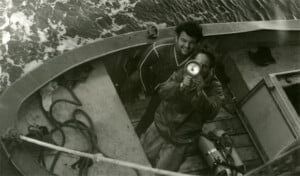
The divers worked for hours on end in dark, muddy and freezing conditions. The biggest problem was a large crack that stretched right down one side, only stopping at the keel. This meant the hull was only hanging together on one side and was close to breaking completely in half.
“We knew there was a split in it from the survey that had been done,” Lyle said. “But no one knew how far it extended or how bad it was going to be until we did a dive. It was enormous.”
Stu added: “We had to dig a tunnel (through the mud) under where the crack was all the way up the ship’s side… to see how far the damage went. We rigged ourselves up an airlift, using high pressure air, like a hoover, to drag the dirt away as we cleared it. We then saw the extent of the damage which was much worse lower down.”
A call went out on local radio for mattresses that could be used to stuff into the crack. The idea was that as the ship floated and was lifted onto the pontoon, the crack would come together squashing the mattresses and forming a tight seal. It was a method used for generations in the Navy on ‘damage control’.
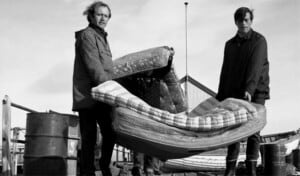
Marion Morrison/ South American Pictures
The response from the Falkland Islander’s was overwhelming. Hundreds of mattresses were donated.
“I think every family gave us a mattress,” Lyle said. “And I suspect some of them were mattresses that were really better than they should’ve given us. “
“The mattresses were quite difficult to pull underwater, so we had to cut them into sizeable pieces and then pull them down and stuff them inside the crack, actually, hammer them in, so it was quite labour intensive.”
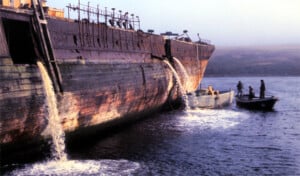
Marion Morrison / South American Pictures
After weeks of meticulous work taking down the masts, patching up holes and pumping out gallons and gallons of water and mud, it was finally time to see if the SS Great Britain would float.
“We started the pumps up and Mr O’Neil kept his eye on what was going on pretty closely,” Stu said. “He decided the water was going down, which was a good thing. I can’t honestly tell you how long we pumped for, it might have been two or three days or something like that.”
But with the tide at maximum height, the SS Great Britain still wasn’t moving.
Lyle recalls: “Bill O’Neil said to Stu ‘this is actually looking quite grim. She should be floating by now.’”
However, the team would not give up that easily and Lyle and Stu decided to add just one more patch above the crack where water was lapping over.
“That’s when I started to see a few bubbles,” Lyle said.
“We were getting pretty tired by that time and I didn’t realise the full significance of it. I should have done…”
The bubbles signified breaking the suction between the ship’s hull and the seabed, but not realising this at the time the team had gone for a break and something to eat.
“Suddenly she broke adrift and she was afloat. The wind had pushed her, rocked her, and she was just starting to move. So we left all the breakfast, rushed back and by then, she had moved a couple of metres.”
“And the patch (over the crack) did us proud. You could hardly see where we put the mattresses in because it pinched that hard. You’d hardly know there was anything there. It was absolutely marvellous.”
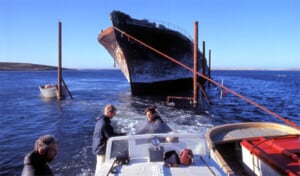
Marion Morrison/ South American Pictures
After moving the ship into deeper water, it was now down to the team, led by the German crew, to get the SS Great Britain onto the submersed pontoon. Finally, on Sunday 12 April, the sight they had all been waiting for.
“As the bow of the Great Britain started to rise above the surface and as she emerged more and more, we began to realise the enormity of our achievement,” Lyle said.
“The first thing that really impressed me was this lovely sort of ‘V’ shape. She just looked so lovely like a yacht, but much, much, much bigger. And although all the mussels were clinging on still and dripping water, and it started to get a bit smelly, she just looked so beautiful.”
“I just stood there in amazement. I shouldn’t have been surprised, but I absolutely was gobsmacked.”
Stu added: “It was all a bit emotional, really. It looked fantastic. I’ll never forget that sight, never, ever forget that.”
The whole team were on a high, with all feelings of tiredness forgotten.
“It was just a feeling of elation,” Lyle exclaimed. “We were on a winner. We knew this was happening. We had achieved it. And I’ve got to say in record time. I think the reason we succeeded was the fact that we were determined. It had to succeed.”
The SS Great Britain was towed into Stanley for a final farewell from the Falkland Islanders that had kept her safe for over 80 years. Then, on 24 April 1970, she left for the long journey home. The Risdon Beazley team assisted with further sea fastenings in Montevideo, and the next time Lyle and Stu would see her would be in Avonmouth near Bristol two months later.
Longer read: salvage diver, Lyle Craigie-Halkett shares his personal account of the 1970 rescue and homecoming (PDF)
